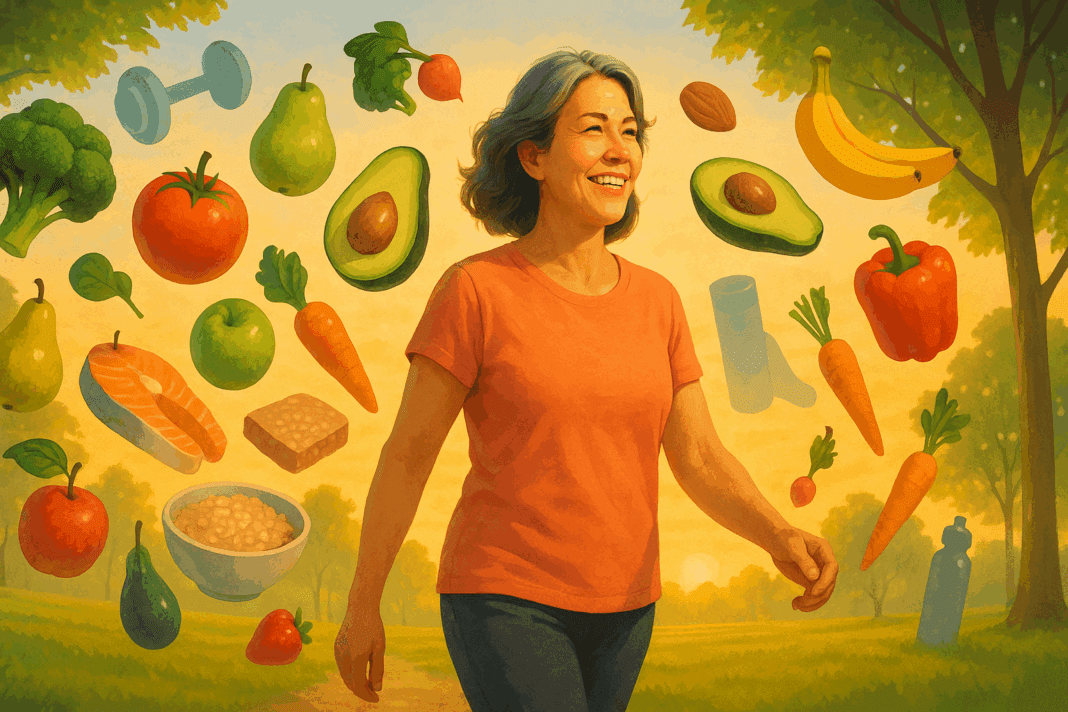Embracing a Healthier Future After 50: Why Diet and Exercise Matter More Than Ever
Turning 50 is a milestone that brings not just wisdom and experience, but also a unique set of physical and metabolic changes that can significantly impact a woman’s health. As estrogen levels decline during menopause, many women experience shifts in fat distribution, loss of lean muscle mass, and slower metabolism. These changes often make weight management and energy maintenance more challenging than in earlier decades. However, the right combination of diet and physical activity can offer powerful protection against age-related health issues like osteoporosis, cardiovascular disease, insulin resistance, and unwanted weight gain.
You may also like: Expert-Backed Weight Loss Tips for a Healthier Lifestyle: What You Need to Know for Long-Term Weight Control and Wellness
Developing the best diet for women over 50 isn’t about following trends or restrictive fads—it’s about building a sustainable, nutritionally sound lifestyle that fuels longevity, preserves vitality, and supports the body’s evolving needs. When paired with an exercise routine that supports joint health, flexibility, balance, and endurance, this holistic approach lays the groundwork for healthy aging. A free diet for women over 50 with exercise doesn’t mean giving up taste or variety; it means empowering the body with nutrient-dense foods and purposeful movement that work in tandem to promote overall wellness. In this guide, we’ll explore evidence-based dietary principles, practical meal strategies, and doctor-approved fitness routines tailored specifically for women entering this dynamic stage of life.
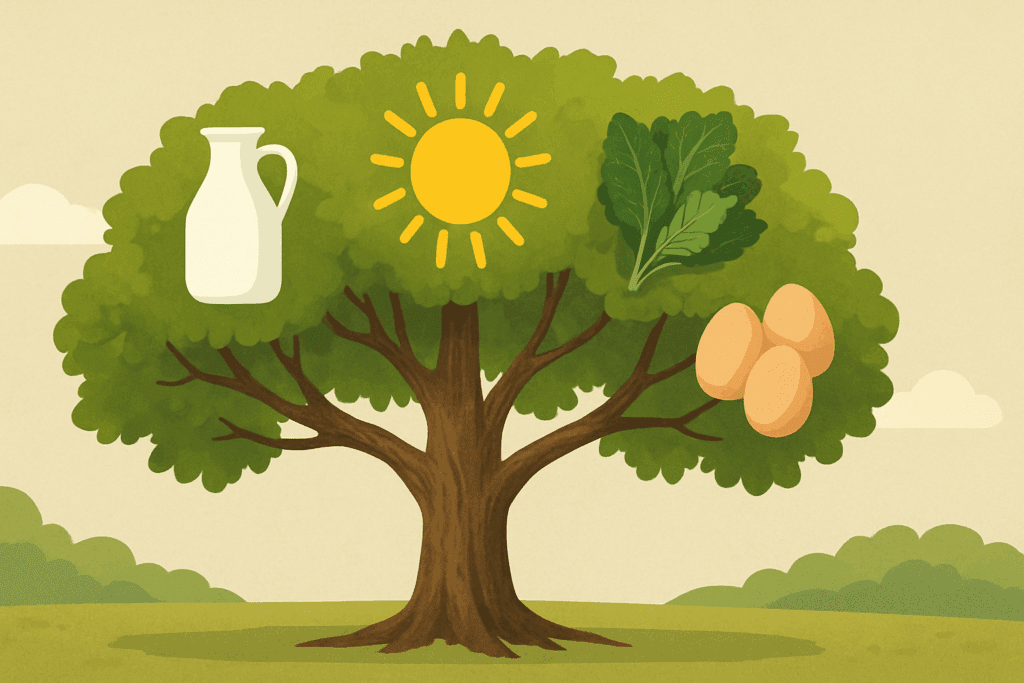
Understanding Nutritional Needs for Women Over 50: A Science-Backed Perspective
With age, the body’s nutritional demands shift in subtle yet important ways. Post-menopausal women are more prone to deficiencies in key nutrients like calcium, vitamin D, magnesium, and B12. Bone density begins to decline, and the risk of developing conditions like osteopenia or osteoporosis increases significantly. Similarly, changes in body composition result in decreased lean muscle mass, making protein intake an essential focus for maintaining strength, metabolic rate, and satiety.
The best diet for women over 50 must center around whole, nutrient-rich foods that support hormonal balance, regulate blood sugar, and reduce inflammation. This includes plenty of fiber from vegetables, fruits, legumes, and whole grains to promote digestive health and cardiovascular function. Omega-3 fatty acids, found in fatty fish, flaxseeds, and walnuts, can help combat inflammation and support brain health. Adequate hydration, too, is often overlooked but becomes increasingly vital, as thirst perception can diminish with age.
Crucially, metabolism tends to slow with age, requiring a reevaluation of caloric intake and macronutrient balance. The emphasis should shift from calorie restriction to nutrient density. For example, choosing a bowl of quinoa with steamed vegetables and grilled salmon over calorie-dense processed foods ensures that every bite is contributing to longevity and strength. This shift in thinking is foundational to creating a sustainable, free diet for women over 50 with exercise that fosters wellness without deprivation.
Building the Foundation: Core Elements of the Best Diet for Women Over 50
Designing the best diet for women over 50 requires understanding the building blocks that contribute to optimal health in this demographic. One of the first principles is increasing plant-based diversity in the diet. A wide range of colorful fruits and vegetables delivers essential antioxidants, phytochemicals, and fiber that collectively support cardiovascular, immune, and cognitive function. Cruciferous vegetables like broccoli and Brussels sprouts, for example, contain compounds that help metabolize estrogen—a critical consideration in post-menopausal health.
Another key element is ensuring sufficient protein intake. Protein is not only important for muscle preservation but also for immune support and satiety, which helps prevent overeating. High-quality protein sources such as eggs, Greek yogurt, tofu, legumes, and lean poultry should be incorporated into meals regularly. Additionally, prioritizing calcium and vitamin D through both diet and responsible sun exposure helps maintain bone integrity. Foods such as dairy, fortified plant milks, leafy greens, and fish with bones like sardines should be regularly consumed.
Equally important is minimizing processed sugars and refined carbohydrates, which can spike insulin and contribute to fat accumulation, particularly around the abdomen. Choosing complex carbohydrates such as oats, sweet potatoes, and brown rice offers sustained energy while helping regulate blood sugar levels. When designing a free diet for women over 50 with exercise, it’s these whole-food choices that make the difference between fleeting energy and sustainable strength.
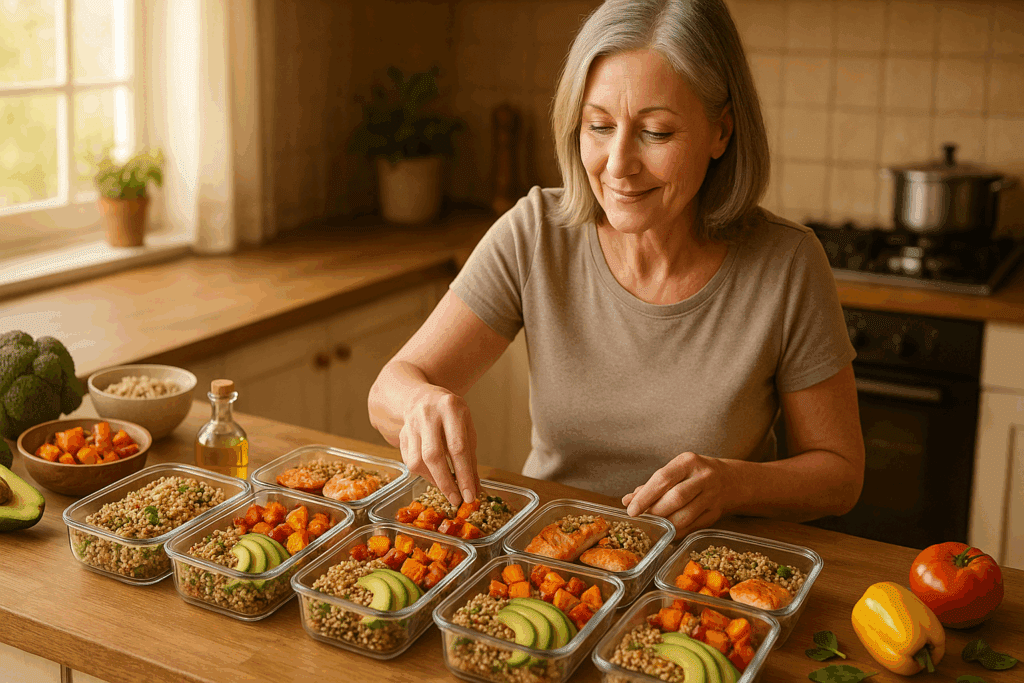
Designing a Free Diet Plan for Women Over 50 with Exercise in Mind
An effective free diet for women over 50 with exercise must be flexible, intuitive, and built around practical routines. This means crafting meals that can be easily prepared without specialized products or costly supplements. Breakfast might include oatmeal with chia seeds and blueberries—a fiber-rich, heart-healthy combination that supports digestive and cardiovascular health. Lunch could be a quinoa salad with roasted vegetables, avocado, and chickpeas, offering a balanced mix of healthy fats, protein, and fiber.
Dinner should aim to be light but nourishing, perhaps a grilled piece of salmon over sautéed spinach with a side of roasted sweet potato. These types of meals not only promote satiety but also deliver essential micronutrients without overwhelming the digestive system at night. Snacks between meals can include sliced apples with almond butter, hard-boiled eggs, or a handful of walnuts—all options that stabilize energy levels and curb cravings.
Importantly, meal timing can be just as influential as food choice. Some women over 50 benefit from adopting a form of time-restricted eating or intermittent fasting, such as a 12:12 or 14:10 schedule, where food is consumed within a set window each day. While this is not a one-size-fits-all solution, for many, it can support improved insulin sensitivity, better digestion, and healthier weight regulation. Paired with moderate, regular exercise, this kind of flexible meal planning forms the heart of a sustainable and empowering nutrition strategy.
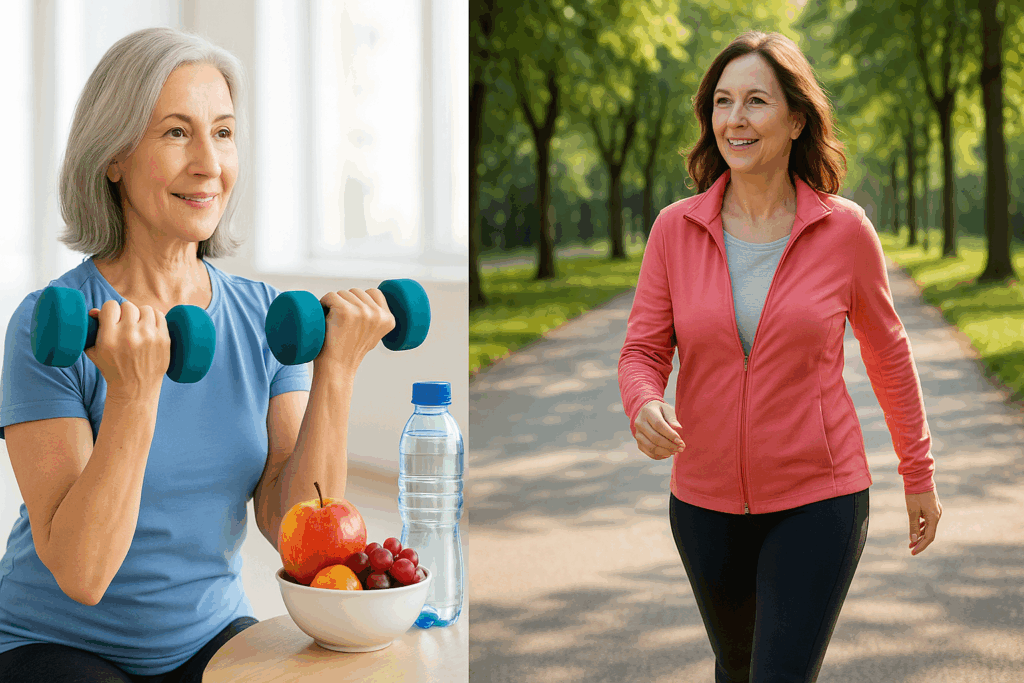
Exercise Synergy: Matching Physical Activity to Dietary Choices
Nutrition and physical activity are two sides of the same coin when it comes to healthy aging. As women over 50 work to preserve bone density, joint function, and metabolic rate, it becomes essential to pair diet with exercise that complements these goals. A well-structured free diet for women over 50 with exercise focuses on providing the energy and nutrients needed to support both movement and recovery.
Resistance training should be a cornerstone of any fitness routine at this age. Lifting weights or engaging in bodyweight exercises like squats and push-ups stimulates muscle growth and supports bone remodeling, crucial for reducing the risk of fractures and frailty. Even two sessions per week can lead to measurable gains in strength and independence. Cardio remains important too, particularly for heart health. Brisk walking, cycling, or swimming helps maintain aerobic capacity and reduce cardiovascular risk.
Equally critical are flexibility and balance exercises, which support mobility and prevent falls. Incorporating yoga, Pilates, or tai chi into a weekly routine enhances joint health and improves posture, often overlooked elements of aging well. When paired with the best diet for women over 50, this kind of exercise plan not only aids in weight management but also promotes cognitive clarity, better sleep, and emotional well-being.

Hormonal Shifts, Gut Health, and Inflammation: The Hidden Trio
For many women over 50, unanticipated weight gain, fatigue, and digestive discomfort become part of daily life. These symptoms are often connected to the triad of hormonal shifts, gut microbiome changes, and chronic inflammation. As estrogen declines, cortisol—the stress hormone—can dominate, leading to stubborn belly fat, mood instability, and sleep disturbances. Simultaneously, the gut microbiota begins to change, which may impair nutrient absorption and immune function.
The best diet for women over 50 addresses this internal imbalance by prioritizing anti-inflammatory foods and gut-friendly nutrients. Fermented foods like kefir, kimchi, and sauerkraut help restore microbial diversity, while prebiotic fibers found in garlic, leeks, and bananas support the growth of beneficial bacteria. Reducing sugar, alcohol, and ultra-processed foods can lower systemic inflammation and improve hormonal harmony.
Adaptogens such as ashwagandha or rhodiola—used under medical supervision—may also help regulate cortisol levels. While not a substitute for healthy eating, these herbal supports can provide relief when used as part of a broader wellness plan. In combination with moderate exercise, which itself regulates cortisol and improves gut transit, this holistic focus on internal balance is crucial in creating a meaningful free diet for women over 50 with exercise.
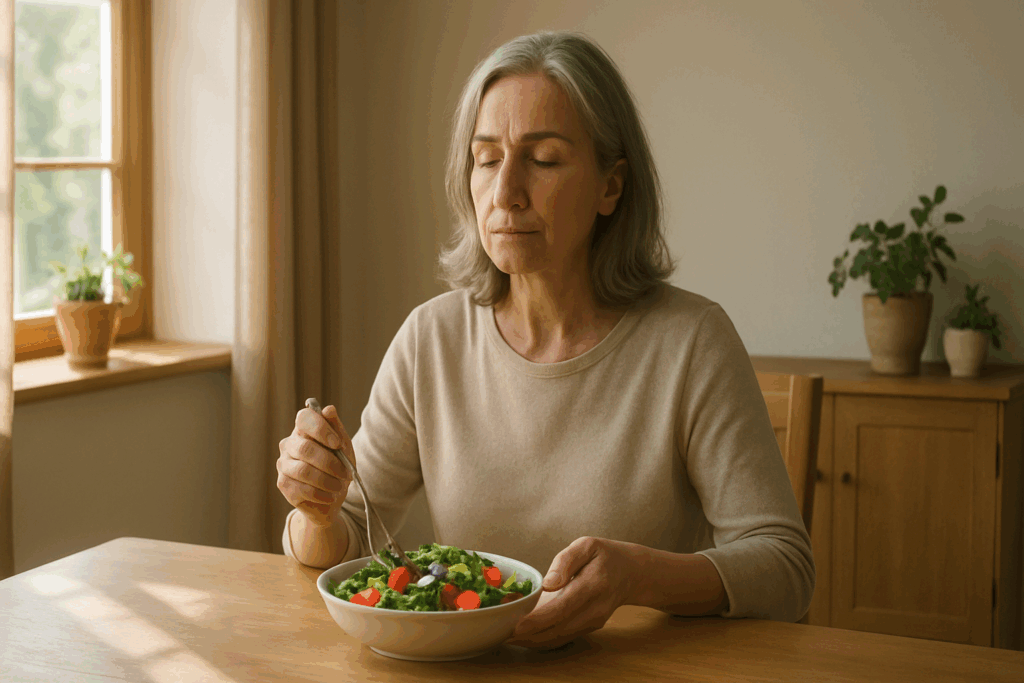
Psychological Health and the Role of Mindful Eating in Aging Gracefully
Mental well-being is just as important as physical health in the aging process, yet it’s often overlooked in conventional diet and fitness plans. Women over 50 often face not only physical transitions but also emotional shifts—from changing family dynamics and career roles to the psychological impact of menopause. Chronic stress and emotional eating can derail even the most well-planned diets.
Mindful eating is a practice rooted in paying attention to hunger cues, food satisfaction, and emotional triggers. Unlike restrictive diets that focus on rules and avoidance, mindful eating encourages a more compassionate and conscious relationship with food. This can reduce episodes of overeating, help break cycles of guilt around food, and re-establish trust in the body’s hunger signals.
Incorporating mindfulness into a free diet for women over 50 with exercise means more than just slowing down at meals. It includes setting positive intentions before eating, eliminating distractions like screens during meals, and honoring fullness without self-judgment. The result is not only healthier digestion but also a renewed sense of control and appreciation for food as nourishment rather than a source of stress.
Addressing Common Myths About Diet and Exercise After 50
There are many persistent myths that discourage women over 50 from adopting healthy habits. One common misconception is that metabolism slows so dramatically that weight gain is inevitable, no matter what. While metabolism does decrease with age, this can be mitigated through increased muscle mass, proper protein intake, and daily movement. A thoughtfully designed free diet for women over 50 with exercise addresses this directly by emphasizing metabolic flexibility and nutrient optimization.
Another myth is that older women should avoid lifting weights to prevent injury. In fact, strength training—when performed with correct form and gradual progression—can significantly reduce injury risk by improving joint stability and muscular support. Similarly, the idea that women over 50 should eat less fat is outdated. Healthy fats are essential for hormone production, brain health, and absorption of fat-soluble vitamins. Avocados, olive oil, nuts, and seeds should have a place in any well-rounded diet.
Perhaps the most damaging myth is that it’s “too late” to make meaningful changes. Research consistently shows that lifestyle changes at any age can reduce the risk of chronic diseases, improve mood, and extend lifespan. Every small shift, from a morning walk to choosing whole foods, has the potential to improve well-being. Embracing the best diet for women over 50, in combination with movement and mindfulness, proves that it’s never too late to thrive.
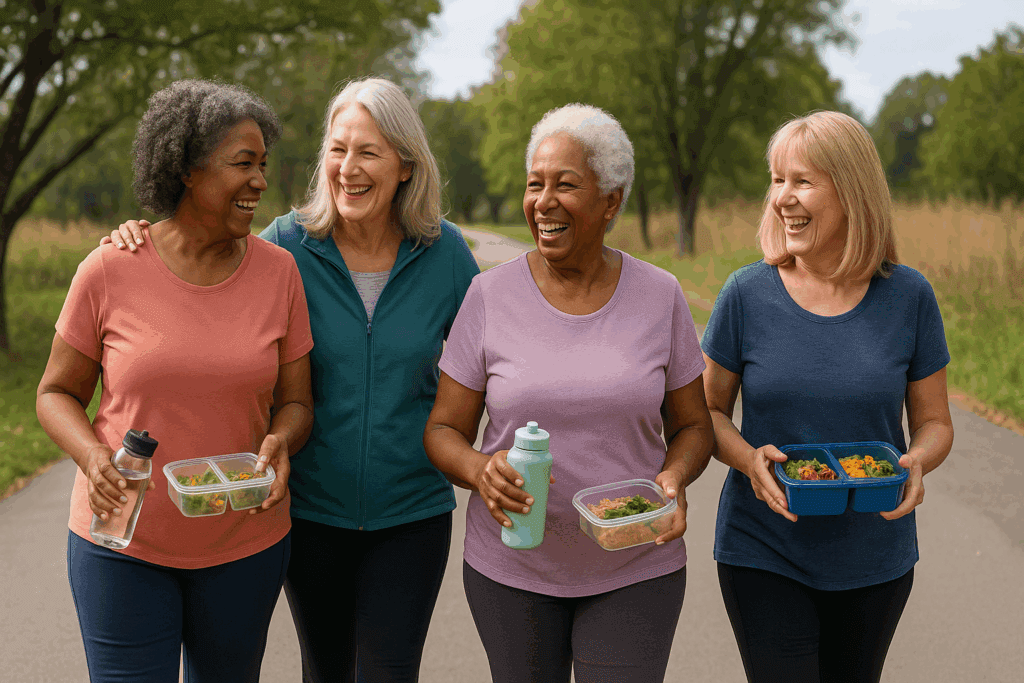
Long-Term Success: How to Make Healthy Habits Stick
Sustainability is the key to success in any lifestyle plan. Fad diets and extreme regimens often fail because they’re not adaptable to real life. The most effective free diet for women over 50 with exercise is one that accommodates social events, travel, and the occasional indulgence without causing derailment. This requires mindset shifts as much as menu changes.
Planning and preparation are foundational. Keeping nutritious staples like canned beans, frozen vegetables, and whole grains on hand makes it easier to assemble balanced meals even on busy days. Creating routines—such as a 30-minute walk after dinner or a Sunday meal prep session—builds consistency. Most importantly, having a sense of purpose around health, whether it’s staying strong for grandchildren or maintaining independence into old age, fuels motivation.
Support systems also matter. Whether it’s joining a fitness group, working with a dietitian, or simply having an accountability partner, community involvement increases the likelihood of long-term adherence. Health is not achieved in isolation. When the best diet for women over 50 is supported by community and intention, it becomes a lifelong practice rather than a temporary fix.
Frequently Asked Questions (FAQ): Best Diet for Women Over 50 and How to Integrate Exercise for Healthy Aging
1. How can women over 50 adjust their diets to support joint health and reduce inflammation?
Supporting joint health becomes a top priority after 50, especially as estrogen declines and cartilage naturally wears down. Including anti-inflammatory foods such as turmeric, ginger, and fatty fish in the best diet for women over 50 can help reduce stiffness and improve mobility. Omega-3s in particular are essential for lubricating joints and minimizing inflammation, making salmon and walnuts smart additions. Collagen-rich bone broth, though not a universal recommendation, may support connective tissue when used in moderation. A free diet for women over 50 with exercise should emphasize whole foods and limit ultra-processed ingredients, which often exacerbate inflammatory conditions like osteoarthritis. Combining this approach with low-impact movement like swimming or Pilates can further protect aging joints.
2. What are common psychological barriers to maintaining a healthy lifestyle after 50, and how can they be overcome?
Many women over 50 struggle with internalized beliefs that health goals are harder or less worthwhile as they age. These limiting mindsets—such as “it’s too late to start exercising” or “dieting is pointless now”—can undermine motivation. Shifting from a weight-loss mindset to a strength-and-vitality framework is often more empowering. The best diet for women over 50 isn’t just about slimming down; it’s about boosting energy, reducing disease risk, and improving emotional well-being. Integrating daily movement as part of a free diet for women over 50 with exercise can create momentum and foster a positive relationship with the body. Setting realistic, meaningful goals like playing actively with grandchildren or hiking with friends can provide motivation that transcends appearance-based outcomes.
3. Can intermittent fasting be part of a healthy routine for women over 50?
Yes, intermittent fasting can be beneficial, but it must be approached with careful attention to nutrient needs and energy balance. For some women, a gentle fasting window such as 14:10—where food is consumed over 10 hours and fasting occurs for 14—can help stabilize insulin sensitivity and promote metabolic flexibility. However, fasting should never be used to undereat or skip essential nutrients, particularly for those managing thyroid conditions or bone density concerns. The best diet for women over 50 should still prioritize balanced meals within any fasting window, with an emphasis on protein, healthy fats, and fiber. In the context of a free diet for women over 50 with exercise, it’s crucial that meal timing supports post-workout recovery and doesn’t result in energy depletion or fatigue.
4. Are plant-based diets effective for women over 50, or is animal protein still necessary?
Plant-based diets can be highly effective for supporting cardiovascular health, reducing inflammation, and managing weight after 50. That said, careful planning is required to ensure adequate intake of essential nutrients like B12, iron, zinc, and complete proteins. A primarily plant-based version of the best diet for women over 50 should include a variety of legumes, tofu, tempeh, and fortified foods. For those choosing to reduce meat but not eliminate it, adding small portions of lean poultry or fish can help bridge nutritional gaps. Whether plant-based or mixed, a free diet for women over 50 with exercise should supply sufficient protein (at least 1.0–1.2 grams per kilogram of body weight) to maintain muscle and support recovery from physical activity.
5. What role does strength training play in supporting the effectiveness of diet after age 50?
Strength training is not just helpful—it’s essential for amplifying the benefits of a healthy diet after 50. As estrogen levels drop, women naturally lose lean muscle mass, which can slow metabolism and increase fat gain even with unchanged eating habits. The best diet for women over 50 supports this physiological reality by fueling muscle retention with adequate protein and key nutrients like magnesium and vitamin D. However, without resistance training, even the most nutrient-dense meal plan won’t prevent muscle decline. When paired with a free diet for women over 50 with exercise, a twice-weekly strength program can significantly boost energy, balance, and metabolic rate, making it easier to maintain a healthy weight long term.
6. How can women over 50 break sugar cravings without resorting to extreme dieting?
Breaking sugar cravings after 50 often requires addressing hormonal shifts, emotional triggers, and habitual eating patterns. The best diet for women over 50 focuses on stabilizing blood sugar through consistent meals that are rich in protein and fiber—two components that naturally reduce the desire for sweets. Adding cinnamon to meals, using natural sweeteners like dates in moderation, or switching to naturally sweet fruits like berries can help transition the palate. It’s also important to look at lifestyle factors; inadequate sleep and chronic stress are strongly linked to sugar cravings. When structured as part of a free diet for women over 50 with exercise, managing stress through movement and sleep hygiene can further reduce the biochemical drive for sugar.
7. Is alcohol compatible with the best diet for women over 50?
Alcohol intake after 50 deserves careful evaluation, as the body’s ability to metabolize alcohol changes with age, and the risk of medication interactions increases. While an occasional glass of red wine may fit within a balanced lifestyle, regular alcohol consumption can interfere with liver function, disrupt sleep, and contribute to weight gain. The best diet for women over 50 generally limits alcohol to no more than one standard drink per day—if at all. For those committed to a free diet for women over 50 with exercise, reducing or eliminating alcohol may lead to better energy levels, improved workouts, and reduced belly fat over time. It also supports more stable hormones and improved hydration—key factors in aging well.
8. What are some practical strategies for maintaining dietary consistency while traveling or eating out?
Maintaining dietary habits while traveling or eating out requires flexibility, planning, and a strong foundation in healthy choices. One effective tactic is to prioritize lean protein and vegetables at every meal, regardless of the setting. When following the best diet for women over 50, travel meals might include grilled chicken salads, fish tacos with corn tortillas, or vegetable-based soups. Packing portable snacks such as almonds, protein bars, or fresh fruit can prevent impulsive eating at airports or roadside stops. A free diet for women over 50 with exercise doesn’t have to be rigid—it just needs to be intentional. Movement can also be incorporated while traveling by walking during layovers, exploring cities on foot, or using hotel gyms to stay active.
9. How does sleep quality influence the success of a diet and exercise plan for women over 50?
Sleep quality is an underrated but crucial component of metabolic health and weight management, especially after 50. Inadequate sleep can increase levels of ghrelin—the hunger hormone—and decrease leptin, which signals fullness. This hormonal imbalance can lead to increased appetite, sugar cravings, and poor food choices. The best diet for women over 50 must be complemented by 7–8 hours of restful sleep to ensure optimal hormone regulation. Within the framework of a free diet for women over 50 with exercise, prioritizing sleep through consistent bedtimes, limited caffeine intake, and relaxing nighttime routines can enhance energy, improve exercise performance, and accelerate body composition goals.
10. What future trends or innovations might improve diets for women over 50?
Emerging trends in personalized nutrition, wearable health technology, and microbiome testing are poised to revolutionize how women over 50 approach their diets. Continuous glucose monitors, for example, are being used outside of diabetic populations to identify individual blood sugar responses to specific foods. Meanwhile, advancements in gut microbiome analysis may soon allow for highly tailored meal plans based on a person’s bacterial profile—helping optimize the best diet for women over 50 on a cellular level. Tech-integrated fitness platforms are also making it easier to build a customized free diet for women over 50 with exercise that responds to real-time data like heart rate, activity levels, and even menstrual history in peri-menopausal individuals. These innovations could shift dietary planning from generic to precision-based, giving women more control and confidence in their health journey.
Conclusion: Why the Best Diet for Women Over 50 Begins with Empowerment and Sustainable Action
Healthy aging is not a destination—it’s a journey built on daily choices, informed decisions, and compassionate self-care. The best diet for women over 50 isn’t about restriction or sacrifice; it’s about empowering the body and mind to thrive through balanced nutrition, enjoyable movement, and mindful habits. When paired with a practical, free diet for women over 50 with exercise, this approach supports not only weight management but also vitality, confidence, and long-term well-being.
By embracing nutrient-dense foods, strengthening muscles through resistance training, supporting mental and emotional health, and debunking outdated myths, women in their 50s and beyond can reclaim their health and reframe aging as a powerful chapter of life. This isn’t about chasing youth—it’s about choosing strength, clarity, and joy every day. With science-backed strategies and personalized care, thriving after 50 isn’t just possible—it’s within reach for every woman ready to take that step forward.
Further Reading:
The Definitive Guide to Healthy Eating in Your 50s and 60s
The Mayo Clinic Diet: A weight-loss program for life
The 3 Best Diets for Women Over 50, According to Doctors and Dietitians


